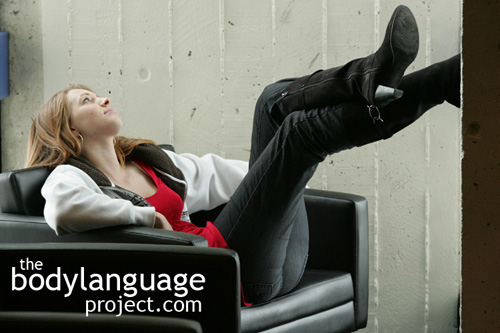The mouth and lips are full of nerve endings which, when stimulated, provides tactile gratification and comfort. However, anytime the fingers go to the mouth or play with the side of the mouth or lip, it’s a retrogressive action since the gesture is an attempt to regain the security they had as an infant suckling and mouthing. Nail biting is also a form of emotional body language, and when present, is usually habitual because of its origins. The habit which is highly unsightly screams “I am insecure” so should be eliminated from a person’s repertoire. These types of gestures are called “pacifying behaviours” because they are designed to reduce anxiety when exposed to something distressing. Pacifying language tells us the mind is not at ease and is an attempt to restore the body’ natural state. The ears, neck and nose are also areas people will hit when their minds require pacifying and they are covered next. Pacifying can also sometimes give up liars because they can be tied or linked to specific words uttered that then in turn require the body to be stroked to create comfort. Pacifying has everything to do with releasing bad tension as a substitute to the hand of a comforting mother.
While baby mouthing has no definitive explanation, it likely stems from the need to strengthen the muscles of the jaw and tongue and increase their coordination to better handle solid foods. Ancestral babies would not have had access to processed foods and the best they would have done was mouth to mouth transfers of masticated food, or food that was broken up by hand. These foods would have contained larger bits as well that might have caused less coordinated babies to choke. When babies first start eating solid foods, they need to balance the size and dryness of the foods with how much they need to mouth it, and yet it, so as to avoid moving it to the back of the throat too soon leading to gagging and vomiting. Poor mouth coordination tied with a mother who’s milk has gone dry too soon, and you have a baby facing early death. Mouthing, therefore, has a strong selective pressure, so today we find babies that mouth whatever they can, to get all the practice they can get. A secondary explanation to mouthing behaviour is that is serves as a way to test and explore objects with a sense that it more developed.
Hand to mouth actions are the most common target for auto touching. It might stem from the concern of giving up too much information, or letting a lie slip, or due to the need for reassurance. Covering the mouth is a natural reaction children do when they tell a secret or inadvertently say a word they know they shouldn’t. Speaking through the hand also shows insecurity and is found when uncomfortable people speak in public. They will hold an elbow on the table and wrap the forefinger around outside of the mouth as they speak.
Adults that are tense or anxious will play with their mouth or lip. Mouthing a pen, cigarette, piece of their own hair, and even gum when used as a comfort device, are a substitute for the mother’s breast and early childhood mouthing. Sucking, plucking, picking or chewing the lips, rubbing them with a finger or thumb are all forms of auto touching. Confident individuals would never consider using this type of security blanket, let alone be seen touching their faces out of insecurity.






